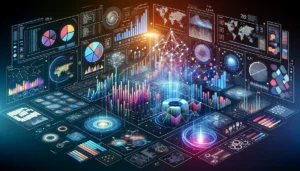In the evolving landscape of data interpretation, the quest for dynamic and intuitive visualization tools has led to the exploration beyond traditional software. This article delves into the nuanced capabilities of four cutting-edge web-based libraries: amCharts, CanvasJS, CanvasXpress, and HighCharts. Each of these platforms offers a unique blend of features designed to enhance user interaction, data representation accuracy, and aesthetic appeal.
amCharts stands out for its vast array of chart types and extensive customization options, making it a versatile choice for developers looking to create interactive, detailed visualizations. Its user-friendly approach does not compromise on power or flexibility, catering to both novice and experienced users.
CanvasJS impresses with its performance efficiency, especially in rendering large datasets swiftly. Its simplicity and clean coding environment appeal to developers who prioritize speed and efficiency without sacrificing quality or visual appeal.
CanvasXpress is highlighted for its robust analytical capabilities, particularly in the scientific and research communities. It supports complex data analysis and visualization, including genomics and bioinformatics, making it a go-to for projects requiring depth and detail.
HighCharts, renowned for its rich feature set and ease of integration, offers a wide range of chart types and is compatible with numerous frameworks and technologies. It emphasizes accessibility and responsiveness, ensuring visualizations perform seamlessly across devices.
The analysis underscores the significance of selecting the right tool based on project requirements, user experience level, and desired outcomes. The web-based nature of these libraries ensures flexibility and accessibility, marking a shift from desktop-based software to more dynamic, interactive web applications.
As data becomes increasingly central to decision-making processes across industries, the ability to present it in an understandable, visually appealing manner becomes paramount. This exploration invites readers to consider these advanced tools not just as software, but as essential instruments in the narrative of data storytelling. Future discussions will aim to delve deeper into the practical applications and case studies showcasing the impact of these visualization libraries in real-world scenarios.

